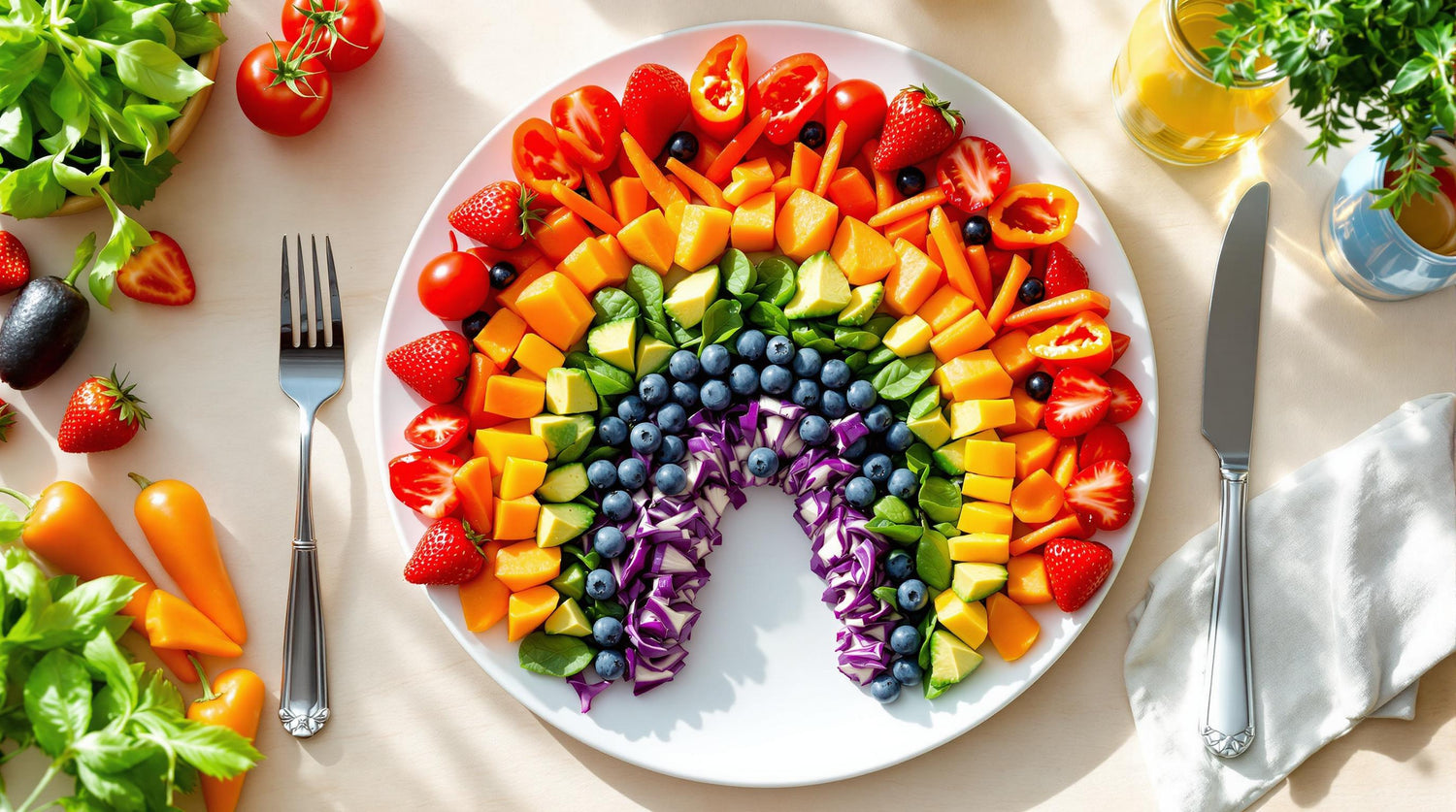Who knew that creating a nutritionally balanced meal could be as simple as channeling your inner artist? The "rainbow plate" strategy is taking the wellness world by storm, and for good reason – it turns the complex science of nutrition into something as straightforward as filling your plate with nature's most vibrant colors.
The Science Behind the Spectrum
Here's the beautiful truth: plants didn't develop their stunning colors just to look pretty in your Instagram feed. Each hue represents a different family of phytonutrients – powerful compounds that give fruits and vegetables their distinctive colors while delivering specific health benefits[1]. Think of it as nature's nutritional coding system, where each color unlocks a different set of wellness superpowers.
Red foods like tomatoes, strawberries, and bell peppers are packed with lycopene and anthocyanins, known for their heart-protective and anti-inflammatory properties[1]. Orange and yellow options such as carrots, oranges, and squash deliver carotenoids that can help decrease inflammation and may even help prevent cancer[2].
Green powerhouses like spinach, broccoli, and avocados contain lutein, which keeps your bones, teeth, and nails strong while preventing blood clots[2]. Blue and purple foods – think blueberries, eggplant, and purple cabbage – are rich in anthocyanins that can reduce blood pressure and help lower the risk of stroke and heart disease[2]. Even white and tan foods like cauliflower and garlic pack a punch with allicin, known for fighting stomach cancer and lowering cholesterol[2].
Making Rainbow Magic Happen
The goal is refreshingly simple: aim for 4.5 cups of colorful fruits and vegetables daily[4]. But before you start measuring, remember that servings are smaller than you think – just half a cup of chopped vegetables counts as one serving[4].
Try the "think in twos" approach: two servings in the morning, two in the afternoon, and two at night[4]. When grocery shopping, glance at your cart – if everything looks monotone, swap a few items to boost your color palette[4]. Pro tip: frozen fruits and vegetables count too and are just as nutritious as fresh options[4].
Beyond the Pretty Plate
Research shows that people eating diverse, colorful foods naturally consume fewer calories while feeling more satisfied compared to those eating processed meals[3]. This variety also supports your gut microbiome, enhancing digestion and reducing inflammation[3]. Plus, let's be honest – a rainbow plate makes healthy eating feel less like a chore and more like a creative adventure.
So next time you're meal planning, remember: the more colors you can fit on your plate, the more comprehensive nutrition you're delivering to your body. Sometimes the most effective wellness strategies are hiding in plain sight!
Thanks for Reading!
We hope you enjoyed this article. Interested in enhancing your wellness journey? Check out our Red Light Therapy Products to see how we can support your goals!
Dive in Deeper
Here are all the resources mentioned:
- [1] https://www.healthline.com/nutrition/eat-the-rainbow
- [2] https://dam.upmc.com/-/media/upmc/services/nutrition/resources/documents/nutrinews-2023-june-july-august-eat-the-rainbow.pdf?la=en&rev=50e41158936c47eda98e0cd19e7c45d3&hash=3D1E01D0905772627657A629ACC1ED18
- [3] https://www.numan.com/weight-loss/diet/the-benefits-of-eating-the-rainbow
- [4] https://www.health.harvard.edu/blog/phytonutrients-paint-your-plate-with-the-colors-of-the-rainbow-2019042516501
- [5] https://www.healthcarehighways.com/about-us/health-blogs/eating-the-rainbow-building-a-colorful-plate-for-ideal-nutrition



